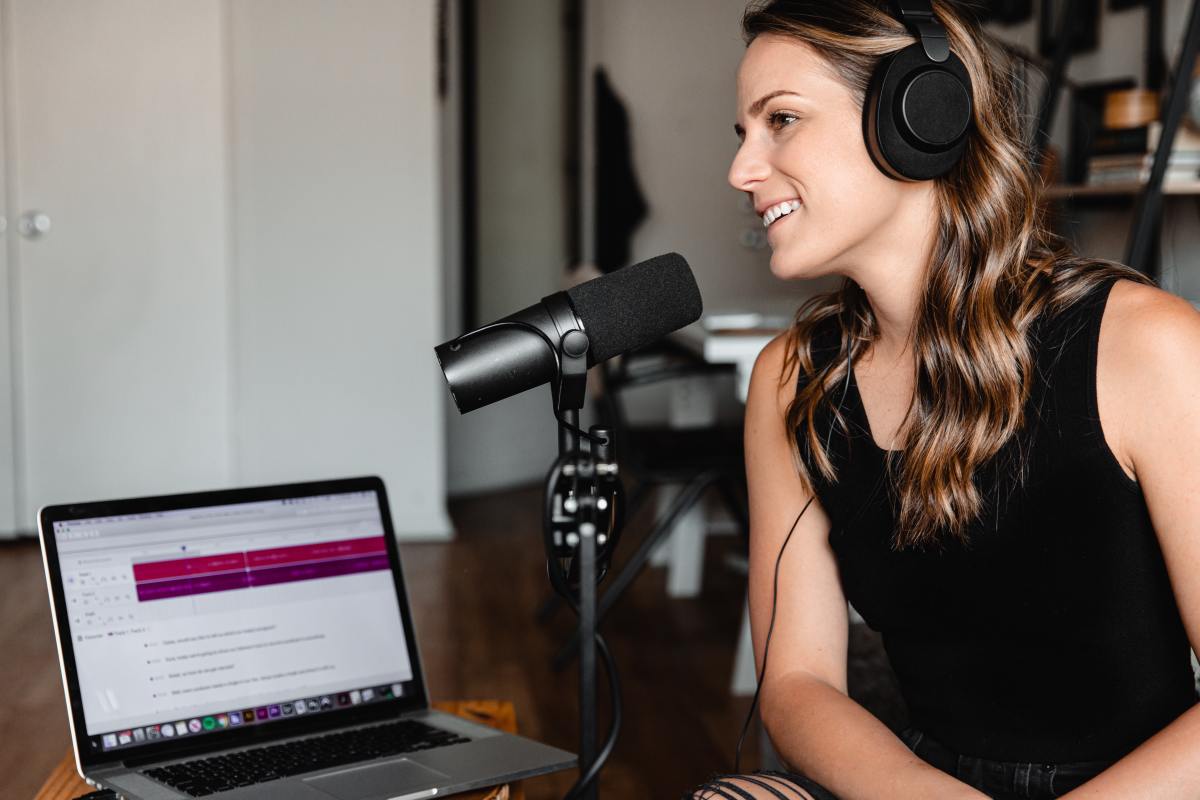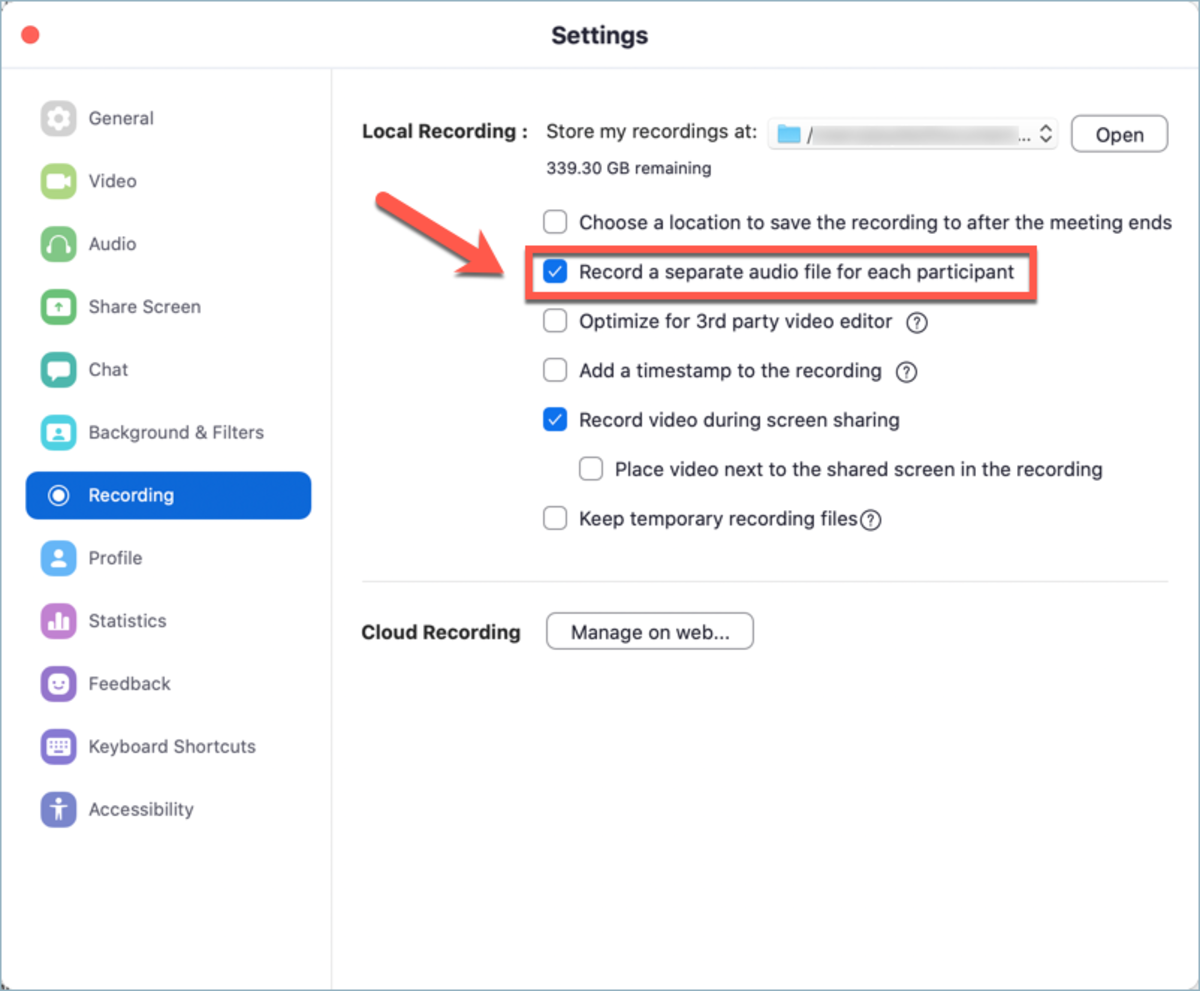The Path of Least Resistance
The quickest and easiest way to record a podcast with Zoom is not necessarily the best way, but if audio quality is not at the top of your list, the built-in recording feature may be just what you need. Once enabled, local recording is available on free or paid accounts. This means Zoom will save a video version, as well as an audio version, of your call to your computer so that you can have a copy of everything you said, and there is nothing quicker or easier than that. To get started, all you need to do is click the Record button on the toolbar during a call. You can stop or pause a local recording at any time using the on-screen buttons. When your Zoom call has ended, the folder containing the recordings will automatically open on your computer. Look for the folder called Audio Record to find the audio file(s) you need for your podcast.
The Best Way to Podcast With Zoom
As convenient as this might be, it’s not ideal. In an ideal world, you wouldn’t use Zoom for anything more than the ability to talk to your guests and co-hosts. So, although you can record your audio in Zoom, you will get better sounding audio if everyone records their own track locally on their computer. Here’s what that would look like in practice. To begin with, you set up a Zoom call and invite the people you are talking to so that everyone can see and hear each other. In addition to joining the Zoom call, each person would also record their own audio with something like QuickTime on a Mac or Voice Recorder on Windows. It helps if everyone starts recording at the same time, and all participants wear headphones for the duration of the recording. When you are finished recording, one person collects all the audio files and combines them in a multi-track audio editor. You can use a free tool like Audacity, or paid apps like Adobe Audition or Logic Pro.
Pros & Cons: Podcasting With Zoom
The biggest advantage of podcasting like this is the audio quality. The local recordings will almost always sound better than a Zoom recording, especially if you use an external microphone. You also won’t get any dropped audio if your WiFi is a little flaky. Another advantage to recording in this way is that you can deal more easily with cross talk, an effect that is amplified by the delay you sometimes experience during in a video call. If one person starts to talk over another, you simply cut that from their audio track and it looks like it never happened. If someone bumps their microphone when they are not talking or forgets to mute their cell phone, you can take that out of their track without compromising the other people who are talking. The biggest downside to this recording method is the time it takes to combine and edit the multiple audio tracks. It does get quicker the more you do it, but it will never be as quick as just recording the Zoom call and using the audio that generates. It can also be a technical challenge for those who are not used to recording audio on their computer. Unless you are a podcaster yourself, this is something that the average person does not do very often so you will have to talk guests through the steps that they need to follow, and this can be a barrier to getting people to talk to you.
Recording Multiple Audio Files in Zoom
If your podcast guest is not very technically minded, and their presence on your show is more important than perfect audio quality, you could just record their part of the Zoom call and use that audio for your podcast episode. The quality won’t be as good as everyone recording their audio separately, but it would work in a pinch. That’s because there is a little known feature in Zoom that allows you to record separate audio files for everyone on the call. Once enabled, you and your co-host can continue to record your audio locally, and all the guest needs to do is talk during the Zoom call. At the end of the call, you can combine the local recordings with the separate audio track that Zoom generates for your guest. If they remember to wear headphones, the guest will be the only person on that audio track and you will be able to splice that audio in with the local recordings you already have. Here’s how to set that up. When you have finished recording your podcast episode, open the folder where the Zoom recordings are stored and double-click on the Audio Record folder. Here you will find a separate audio track for each person in the Zoom call. The file name includes the name of the person to make it easier to identify which file you need.
Final Considerations for Podcast Recording
This content is accurate and true to the best of the author’s knowledge and is not meant to substitute for formal and individualized advice from a qualified professional. © 2020 Jonathan Wylie


